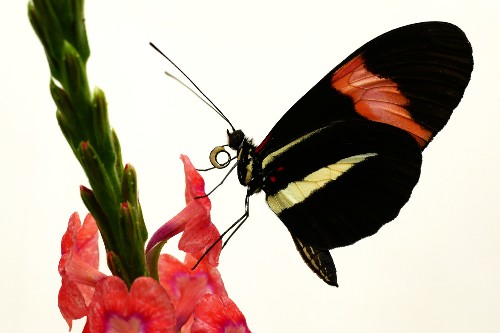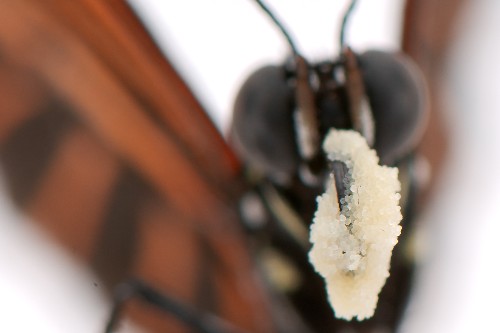
Heliconius butterflyMax Farnworth

Heliconius butterflyMax Farnworth
A species of tropical butterfly with unusually expanded brain structures display a fascinating mosaic pattern of neural expansion linked to a cognitive innovation.
The study, published today in Current Biology, investigates the neural foundations of behavioural innovation in Heliconius butterflies, the only genus known to feed on both nectar and pollen. As part of this behaviour, they demonstrate a remarkable ability to learn and remember spatial information about their food sources—skills previously connected to the expansion of a brain structure called the mushroom bodies, responsible for learning and memory.
Lead author Dr Max Farnworth from the University of Bristol's School of Biological Sciences explained: "There is huge interest in how bigger brains may support enhanced cognition, behavioural precision or flexibility. But during brain expansion, it's often difficult to disentangle effects of increases in overall size from changes in internal structure."
To answer this question, the study authors delved deeper into the changes that occurred in the neural circuits that support learning and memory in Heliconius butterflies. Neural circuits are quite similar to electrical circuits as each cell has specific targets that they connect with, and assembles a net with its connections. This net then elicits specific functions by constructing a circuitry.
Through a detailed analysis of the butterfly brain, the team discovered that certain groups of cells, known as Kenyon cells, expanded at different rates. This variation led to a pattern called mosaic brain evolution, where some parts of the brain expand while others remain unchanged, analogous to mosaic tiles all being very different from each other.
Dr Farnworth explained: "We predict that because we see these mosaic patterns of neural changes, these will relate to specific shifts in behavioural performance – in line with the range of learning experiments which show that Heliconius outperform their closest relatives in only very specific contexts, such as long-term visual memory and pattern learning."
To feed on pollen, Heliconius butterflies need to have efficient routes of feeding, as pollen plants are quite rare.
Project supervisor and co-author, Dr Stephen Montgomery said: "Rather than having a random route of foraging, these butterflies apparently choose fixed routes between floral resources - akin to a bus route. The planning and memory processes needed for this behaviour are fulfilled by the assemblies of neurons inside the mushroom bodies, hence why we're fascinated by the internal circuitry throughout. Our results suggest that specific aspects of these circuits have been tweaked to bring about the enhanced capacities of Heliconius butterflies."
This study contributes to the understanding on how neural circuits change to reflect cognitive innovation and change. Examining neural circuits in tractable model systems such as insects promises to reveal genetic and cellular mechanisms common to all neural circuits, thus potentially bridging the gap, at least on a mechanistic level, to other organisms such as humans.
Looking ahead, the team plans to explore neural circuits beyond the learning and memory centres of the butterfly brain. They also aim to increase the resolution of their brain mapping to visualise how individual neurons connect at an even more granular level.
Dr Farnworth said: "I was really fascinated by the fact that we see such high degrees of conservation in brain anatomy and evolution, but then very prominent but distinct changes."
"This is a really fascinating and beautiful example of a layer of biodiversity we don't usually see, the diversity of brain and sensory systems, and the ways in which animals are processing and using the information provided by the environment around them" concluded Dr Montgomery.
Paper:
'Mosaic evolution of a learning and memory circuit in Heliconiini butterflies' by Max Farnworth, Theodora Loupasaki, Antoine Couto and Stephen Montgomery in Current Biology.






